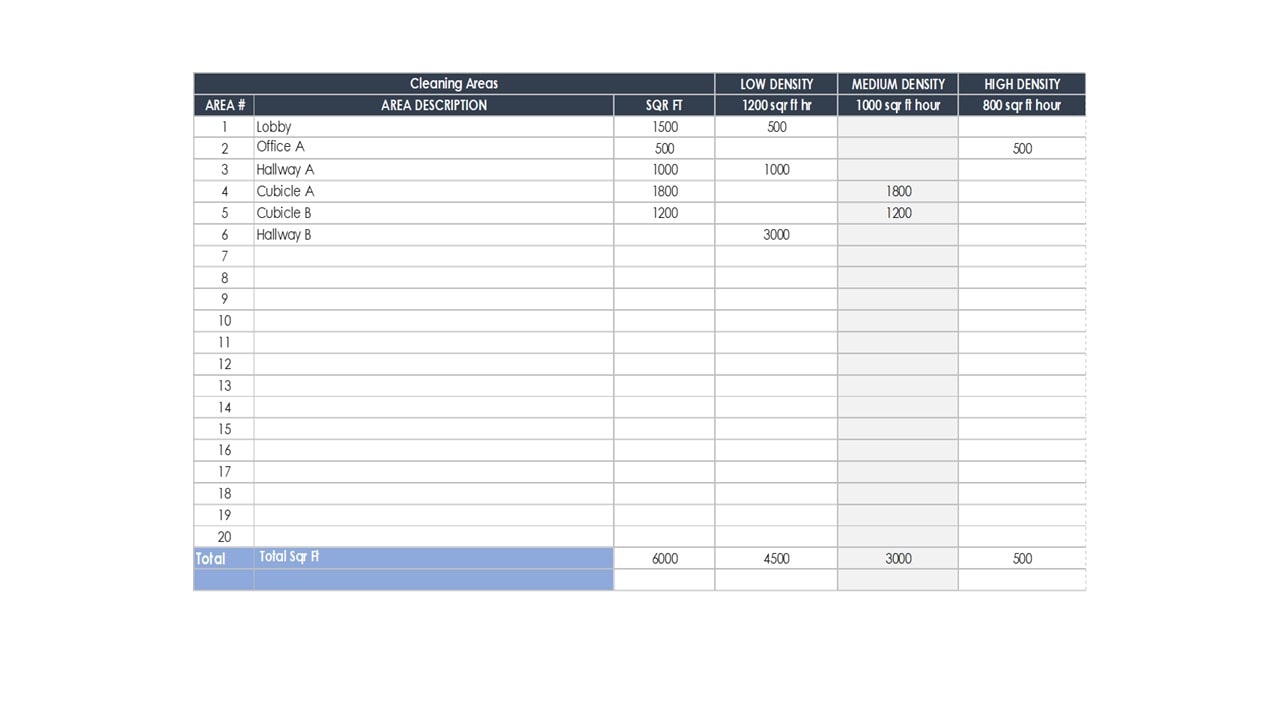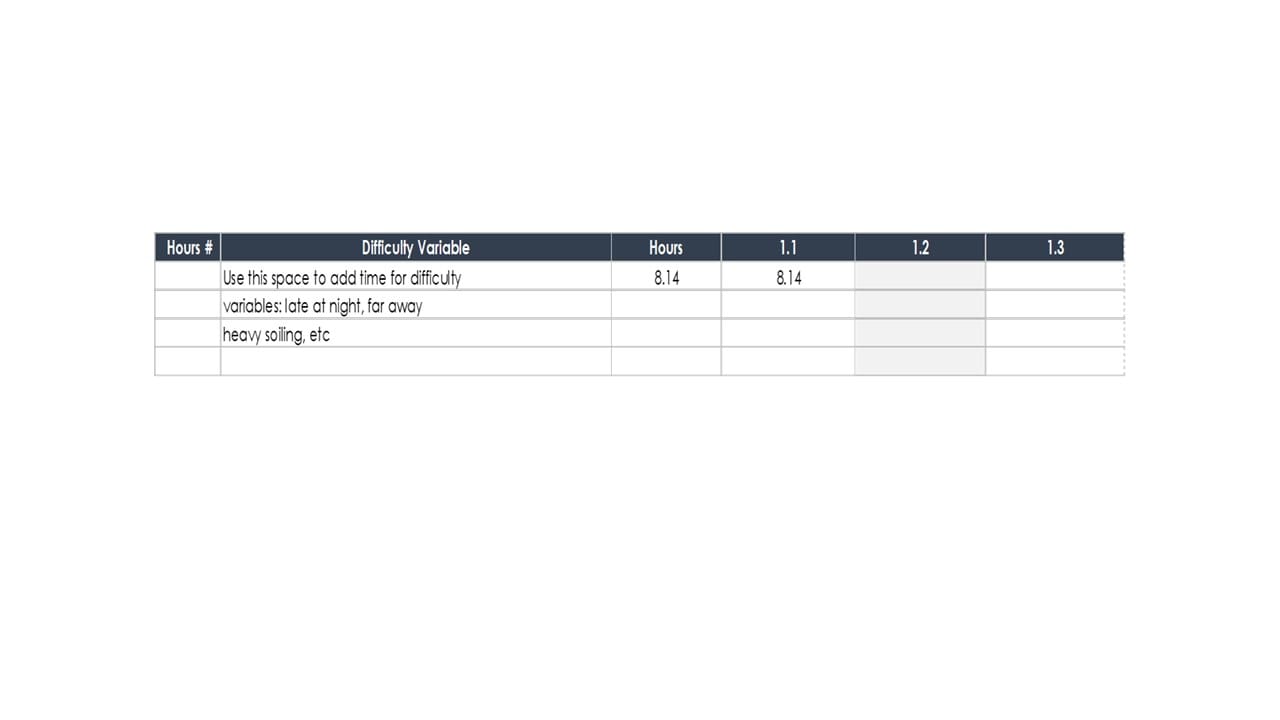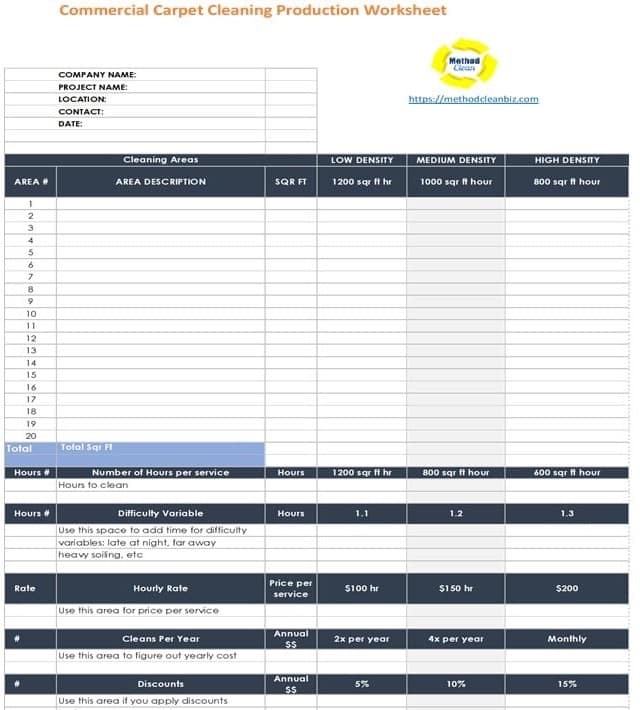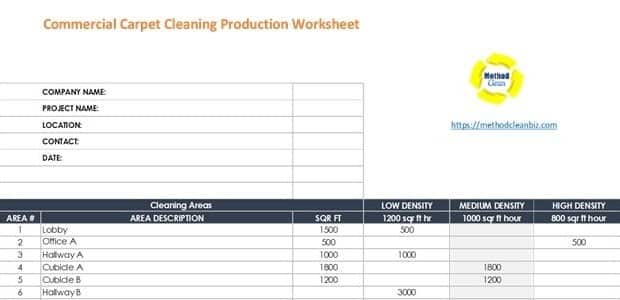Commercial Carpet Cleaning Production Rate Worksheet
Creating a Commercial Carpet Cleaning Pricing and Production Worksheet
If you’re running a commercial carpet cleaning business, then you know how important it is to have an accurate pricing and production worksheet. Without one, you could be losing out on profits or overcharging clients. In this tutorial, we’ll go over six simple steps to help you put together an effective pricing and production worksheet for your commercial cleaning services.
Step 1: Collect and Measure the Areas
The first step is to collect and measure the areas you’ll be cleaning. Some people prefer to measure the whole building length by width and apply one production rate to the entire building.
However, breaking it down into different areas can be more accurate. For example, the density of carpeting can impact how quickly or slowly you can clean it. This can also apply to tile or floor stripping and waxing.
For carpet cleaning, we suggest breaking down the areas into different densities. For example, you might use 1200 square feet for low density, 1000 square feet for medium density, and 800 square feet for high density. Of course, these numbers can vary depending on your preferred rates, equipment, and team size.

Step 2: Calculate the Time
Once you’ve measured the areas, you’ll need to calculate how many hours it will take to clean them. You can do this by multiplying the square footage of each area by your hourly production rate. For example, if you estimate that it will take 1.25 hours to clean 1500 square feet of low density carpet, then multiply that by the number of areas with that density.
Keep in mind that you should also add in any extra time needed for difficult jobs. This could include moving furniture, working late at night, dealing with heavy soiling, or traveling long distances. To account for these variables, you can multiply the total hours by a difficulty factor, such as 1.1 for a 10% increase in time or 1.3 for a 30% increase in time.
Step 3: Apply an Hourly Rate
Once you have the total number of hours, you’ll need to apply an hourly rate to calculate the final price per service. You can set your own hourly rate based on your expenses, overhead costs, and desired profit margins. For example, you might charge $150 per hour for your cleaning services.
To calculate the price per service, simply multiply the total hours by the hourly rate. For example, if it takes 6.75 hours to clean the entire building and your hourly rate is $150, then the price per service would be $1,012.50.
Step 4: Offer Options
Next, you can offer different pricing options in your proposal to your clients. For example, you might offer a one-time price of $1,012.50 or a package deal for four times a year at a discounted rate.
You could also offer more frequent cleaning options, such as twice a month. It’s important to have clear communication with your clients about what services they need and how often they need them.

Step 5: Calculate the Annual & Monthly Price
Once you’ve offered pricing options, you can calculate the annual price for your services. For example, if the four times a year package is $2,550, then the annual price would be $10,200. This gives your clients an idea of what the entire year of cleaning services will cost.
Step 6: Apply a Volume Discount
Finally, you can apply a discount to recurring jobs. This is not a traditional discount, but rather a way to acknowledge that you may be able to clean the area more efficiently over time.
For example, after cleaning an area a few times, you may be able to move 5-15% faster than before. This can help you to be more productive


